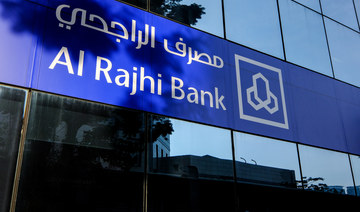RIYADH: Saudi banks are expected to witness higher loan growth this year and beyond driven by increased demand for corporate loans as the Kingdom is forecasted to register strong gross domestic product growth, stated a recent report by Al Rajhi Capital.
The Riyadh-based financial services provider analyzed the Kingdom's top 10 banks and has raised its total loan growth estimates for the industry for 2022 and 2023 to 14 percent and 12 percent, respectively.
This is up from the previously estimated growth rate of 13 percent and 11 percent for the same period.
Al Rajhi has also made major changes to its loan growth estimates for 2024 and 2025 – which it believes will grow by around 11 percent, up from previously estimated 9 percent and 7 percent.
“The loan growth in the banking system continues to surprise us on the upside,” said the report, adding that the 10 banks under its coverage reported an aggregate loan growth of 16 percent in the third quarter of 2022.
At the same time, it pointed out the latest data from SAMA for the month of October indicated the continuation of this momentum, with total loans in the system up 16 percent year-on-year.
On the flip side, however, Al Rajhi Capital has trimmed its net interest margin expansion estimates for 2023 to a 12-basis points expansion year-on-year from 64 bp before.
The finance firm has kept its estimates for mortgages unchanged while reducing them for personal finance loan growth numbers.
Based on the data available for the first nine months of 2022, the report stated that mortgages continue to be the key driver for the banking sector’s loan growth. At the same time, it added that personal loans’ rate of growth has also been on a decelerating trend, from almost 15 percent year-on-year in the first quarter of 2022 to 9 percent in the third quarter of 2022.
However, Al Rajhi noted that corporate loans have been on an accelerating trend from 9 percent and 10 percent year-on-year growth in the first quarter and second quarter of 2022, respectively, to 13 percent growth in the third quarter of 2022.
Analysts at Al Rajhi continue to believe that corporate loans would be the key driver for total loan growth going forward, backed by the Kingdom’s small and medium enterprises sector which has been benefitting from various governmental measures.
“Going forward, we believe the mid and large corporate loan category to see higher uptick from 2023 onwards, particularly from H2 2023, supported by implementation of Giga projects and many other initiatives under vision 20230,” the report noted.
Saudi Arabia is currently implementing a number of initiatives under the national investment strategy, including the Shareek program, the National Strategy for Industry and Agriculture – all of which are expected to improve the investment environment in the Kingdom.
While the banking sector is up for improved performance, the ongoing volatility in the market means the Tadawul banking index is taking a significant beating, falling by 10 percent since the end of September, 2022.
Over the last two months, Al Rajhi noted that the fundamental factors were mixed for the banking sector with the tight liquidity situation resurfacing again in October and November, while monthly data from SAMA indicated strong loan growth and third-quarter results showing healthy profit growth.
Despite some improvement in the liquidity situation, the report pointed out that the banks have not recovered much of their recent losses. At the current levels, the dividend yield of the sector has reached around 4 percent based on the 2023 estimate.
“Further, if we assume credit growth to remain healthy, then the current market price levels assume hardly any net interest margin expansion for the next two-three years,” Al Rajhi Capital said.














